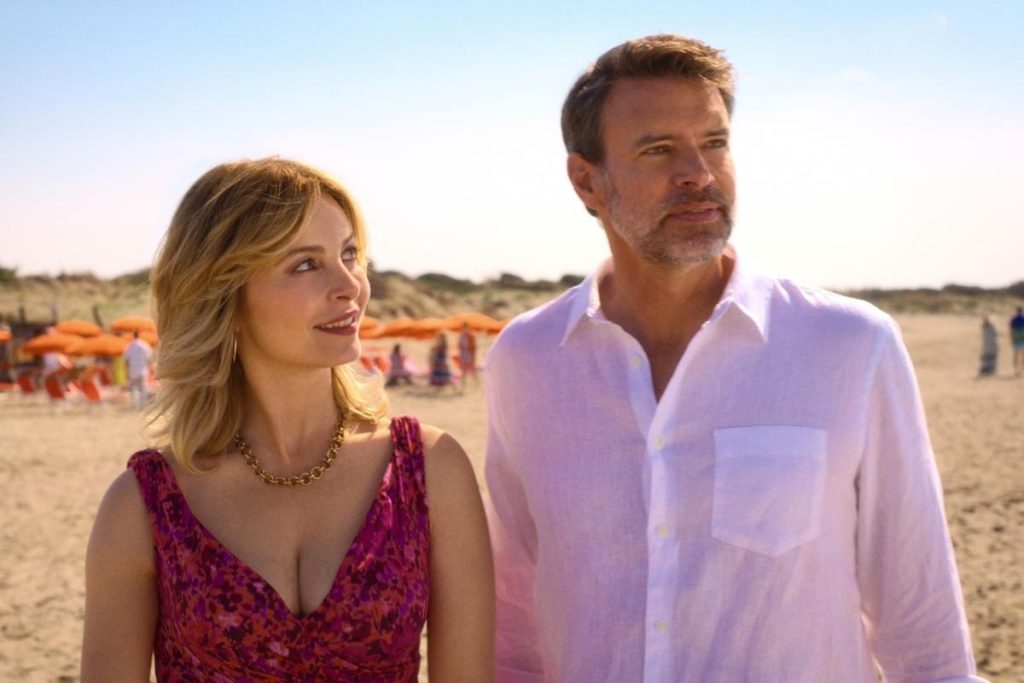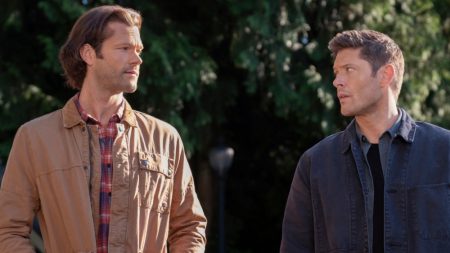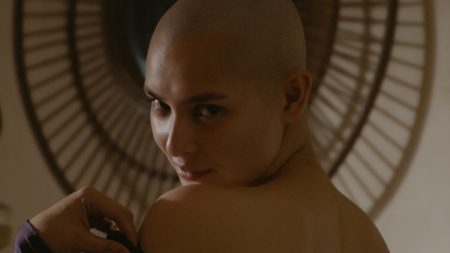1. Introduction to the Movie and Its Premiere
This Valentine’s Day, Netflix invites viewers on a romantic escapade to Italy with its latest original film, "La Dolce Villa." Directed by the accomplished Mark Waters, known for his work on films like "Mean Girls" and "The Spiderwick Chronicles," and scripted by Elizabeth Hackett and Hilary Galanoy, the movie promises a blend of humor, heartwarming moments, and the quintessential Italian charm. "La Dolce Villa" launched on Netflix on February 14, 2024, offering viewers a perfect getaway from the monotony of daily life, especially for those seeking a romantic escape.
The story centers around an impulsive journey to Italy, where an American father-daughter duo finds themselves entangled in a heartwarming adventure. Eric, played by Scott Foley, known for his roles in "Scandal" and "The Unit," travels to Italy upon learning that his daughter, Olivia, portrayed by Maia Reficco, is about to invest in a dilapidated "one euro villa." Skeptical of her decision, Eric arrives with the intention of dissuading her, only to find himself immersed in the villa’s renovation. As they work together, they uncover more than just the villa’s hidden beauty; they also discover the charm of Italy, which has a way of kindling romance and introspection.
2. The Plot and Its Romantic Elements
The plot of "La Dolce Villa" is a delightful mix of renovation, romance, and self-discovery, set against the backdrop of Italy’s picturesque countryside. The story follows Eric, a protective father, and his daughter Olivia as they embark on a journey to restore an old villa. What starts as an attempt to reconnect and offer guidance evolves into a transformative experience for both characters. Along the way, they meet a cast of characters played by Violante Placido and Giuseppe Futia, adding layers to the story and enhancing the emotional depth of the film.
The movie’s romantic elements are not just limited to the developing love stories but also extend to the love affair with the Italian landscape. The rolling hills, charming villages, and the rich cultural heritage of Italy serve as a character in themselves, influencing the characters’ journeys and decisions. The story is a testament to the power of love in its various forms—parental love, romantic love, and the love for life’s simple joys.
3. The Filming Locations and Their Significance
One of the standout aspects of "La Dolce Villa" is its stunning filming locations. The movie was shot on location in Italy, with scenes captured in Rome, Eastern Lazio, and Tuscany. The film’s director, Mark Waters, and the cast, including Scott Foley, were evidently smitten with the beauty of Italy, as they brought a palpable passion to the project. Speaking to Netflix Tudum, Foley expressed his willingness to return to Italy for another project, highlighting the country’s allure.
The interior scenes of the villa were filmed at the renowned Cinecittà Studios in Rome. This historic studio has been a hub for iconic filmmakers, including Martin Scorsese and Luca Guadagnino. It’s where Federico Fellini shot his seminal 1960 film "La Dolce Vita," a title that clearly inspired the name "La Dolce Villa." The connection to Fellini’s masterpiece adds a layer of cinematic history to the film, making it a treat for film enthusiasts.
The outdoor scenes were filmed at Torrino del Gelsi, a charming farmhouse in the Roman countryside. This idyllic location, surrounded by ancient mulberry and olive trees, provided the perfect setting for the villa’s renovation scenes. The farmhouse, which is also a popular wedding venue, offers a picturesque backdrop that captures the essence of Italy’s natural beauty. For viewers unable to visit in person, the film offers a chance to experience the magic of Italy from the comfort of their homes.
4. The Cultural and Cinematic Appeal of the Film
"La Dolce Villa" is more than just a romantic comedy; it’s an ode to Italy’s unparalleled beauty and cultural richness. The film’s use of authentic locations ensures that audiences are treated to a visually stunning portrayal of the Italian countryside. The decision to film on location rather than relying solely on studio sets adds a layer of authenticity to the story, making it easier for viewers to become fully immersed in the characters’ journeys.
The film also pays homage to Italy’s rich cinematic history. The reference to Fellini’s "La Dolce Vita" in the title is a nod to the country’s enduring influence on world cinema. By filming at Cinecittà Studios, the filmmakers continue a tradition of excellence that has been a hallmark of Italian cinema for decades. This connection to the past adds depth and context to the film, making it a must-watch for cinephiles.
Moreover, the film’s setting in Tuscany and Lazio allows for a celebration of Italy’s diverse landscapes and cultural nuances. The story’s focus on renovation and restoration also serves as a metaphor for the timeless beauty of Italy, which continues to captivate visitors and filmmakers alike. For those who have ever dreamed of living in Italy or restoring an old villa, "La Dolce Villa" offers a vicarious experience that is both inspiring and entertaining.
5. The Cast and Their Performances
The success of a film often hinges on the chemistry between its leads, and "La Dolce Villa" does not disappoint in this regard. Scott Foley brings his signature charm to the role of Eric, a loving but overbearing father trying to navigate his relationship with his daughter. His performance is both nuanced and endearing, making it easy for audiences to root for his character as he navigates the challenges of fatherhood and midlife reflection.
Maia Reficco, who plays Olivia, delivers a standout performance that complements Foley’s portrayal perfectly. Her character’s determination and creativity provide a compelling contrast to her father’s skepticism, creating rich opportunities for character development and emotional depth. The dynamic between the two leads is genuine and heartfelt, making their journey feel authentic and relatable.
The supporting cast, including Violante Placido and Giuseppe Futia, adds warmth and complexity to the story. Their characters bring new perspectives and opportunities for growth, enriching the narrative and ensuring that the film is more than just a father-daughter story. The ensemble’s performances, coupled with the film’s beautiful setting, make "La Dolce Villa" a rewarding watch for audiences seeking a mix of humor, romance, and emotional depth.
6. Conclusion and Recommendations
"La Dolce Villa" is a film that will resonate with anyone who has ever been captivated by the beauty of Italy or the joy of restoring something to its former glory. The combination of its stunning locations, heartfelt performances, and engaging storyline makes it a must-watch for fans of romantic comedies and Italian cinema. For those without a Valentine’s Day date, the film offers a perfect solitary escape, while couples can enjoy it as a romantic treat.
The film’s exploration of love in all its forms—parental, romantic, and self-love—adds layers of emotion that make it more than just a lighthearted romp. The story’s focus on renovation and restoration also serves as a metaphor for the importance of preserving beauty and tradition in our fast-paced world. With its authentic settings, endearing characters, and uplifting message, "La Dolce Villa" is a cinematic gem that will leave viewers feeling inspired and perhaps even a little bit in love.
So grab a cup of coffee, settle into your favorite spot, and let "La Dolce Villa" transport you to the sun-drenched hills of Italy. Whether you’re celebrating love or enjoying some well-deserved me-time, this film is the perfect companion for a cozy night in. With its beautiful scenery, engaging storyline, and heartfelt performances, "La Dolce Villa" is a Netflix original that promises to capture your heart and leave you with a lasting sense of wanderlust.









